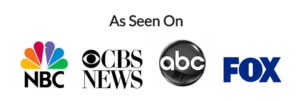“The foundation of a good retirement is planning.” – Earl Nightingale
In times like these, saving for retirement is hard enough. That’s why you want to make sure you plan it right — or at least as right as you can. (The future is always full of a few unknowns.)
You see, late last year Congress made big changes to the rules for retirement savings accounts when it passed the SECURE 2.0 Act of 2022 (that stands for “Setting Every Community Up for Retirement Enhancement”).
This clever acronym makes a heap of changes to how long you have before you must make withdrawals, how much you can withdraw and contribute, and what savings vehicles you can use. These and other modifications take effect both now and in the months (and even years) to come.
Like I said, you want to make a plan for yourself in light of this. So, let’s break down some of the biggest changes that affect your savings for your golden years.
RMDs
You generally start taking money out of your retirement accounts without penalty when you’re in your late 50s. When you reach a certain age later, though, the government mandates that you must take money out of your account. These are known as “required minimum distributions” (RMDs).
What’s changed: The new age for taking RMDs is 73, up from 72. (Ten years from now, the deadline age for starting to take RMDs will jump to 75.) The penalty for failing to take your RMD drops to 25% this year — even down to 10% if you correct an RMD mistake soon enough. However, you don’t have to take RMDs at all from your Roth 401(k) starting next year, if you don’t want to.
What to watch out for: If you don’t need the money, you can still delay taking your first RMD until April 1 of the year following your deadline (73rd) birthday… but this means you could wind up having to take two RMDs in one year and getting hit with a bigger tax bill. Delaying RMDs until the last minute also means potentially larger mandatory withdrawals — and more taxes down the road. We can help you crunch the numbers to make sure nothing gets lost in the process.
Catch-up savings
Obviously, making withdrawals will go nowhere pretty quickly if you haven’t been saving. And there have been some changes to how you save, too.
What’s changed: Once 2025 hits, if you’re 60 to 63 years old, you’ll be able to save a larger extra amount in your qualified retirement plan, such as a 401(k) or 403(b) — 10 grand or 50% more than your regular catch-up limit, whichever’s greater. For the Savings Incentive Match Plan for Employees of Small Employers (SIMPLE) plans, the amount is 50% more than normal or 5,000 dollars (again, whichever is greater).
Next year, SECURE 2.0 also changes how you can make catch-up contributions if you make more than 145K. All your catch-up contributions will have to go to a Roth account using after-tax dollars.
What to watch out for: If you have to go that Roth route, you might have to deal with tax rates that are higher for you now than they would be in retirement.
Annuities
You might not know that you can buy a qualifying longevity annuity contract (QLAC) using other retirement plan funds, and then you don’t have to begin taking RMDs until your 80s. These annuities can also help lower the balance of your tax-deferred retirement accounts, meaning you can make your RMDs (and taxes) smaller. But IRS rules limit the amount that you could use to buy a QLAC.
What’s changed: The allowable QLAC amount has been bumped to a max of 200 grand — a considerable increase.
What to watch out for: You lose control of the money you put in a QLAC — and there’s a chance you may not live to tap it. The return might also be lower than you’d see on the investments of your mainstream retirement accounts.
More changes
These other details are worth mentioning:
- Starting this year, you can get matching employer contributions to a regular 401(k) or a Roth 401(k) on a pre- or after-tax basis.
- Starting next year, you can take an early “emergency” distribution of up to a grand from your retirement account without penalty. You can only take one a year; if you don’t pay it back, you can’t take another one for three years.
- Starting in 2024, you can roll a 529 college savings plan to a Roth IRA. There are many conditions, one of them being you must have had the 529 for at least 15 years.
- Also beginning in 2024, your employer can match the value of your student loan payments in the form of a contribution to your retirement plan.
Further down the road, you’ll be able to tap your retirement money to help pay for long-term care insurance in 2026. And in 2027, the feds will kick in a matching contribution for lower-income taxpayers who contribute to a retirement account (the “Saver’s Match”). Of course, we watch all of those updates, and we’ll keep you in the loop on what’s going on.
(And I shouldn’t end without saying: Many of the figures above will also get adjusted for inflation as the months go by.)
That’s a lot to think about, I know… and these aren’t even all the changes SECURE 2.0 hath wrought, believe it or not. Don’t feel like you have to know every detail to the “t” (that’s what I am here for), but I want to make you aware of the changes happening that will affect your planning.
Let me know if you want to chat about it,
Thomas Marshall





